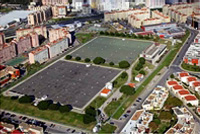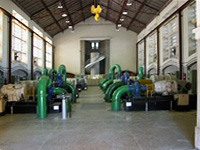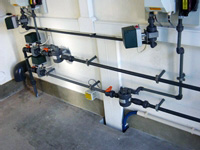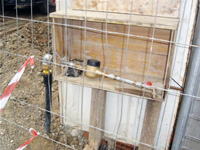
| Reservoir
A large water deposit, normally built using concrete, where a large volume of water is stored, used as a reserve to regulate water flow, supply and pressure as well as to control emergency water resources. There are underground, semi-underground and raised reservoirs. |

| Pumping Station
This is a system which comprises a reservoir and electro-pump groups which can increase the water level (piezometric elevation) transported or distributed by the public supply services. |

| Electro-pump
A machine made up from two distinct parts: the engine and the pump. The engine transforms the electricity supplied by the electric power network into mechanical energy which rotates the engine shaft and which, in turn, is transmitted to the pump impeller. The rotation of the impeller produces a suction effect on the water in the pump inlet pipe and a compression effect on the water in the outlet pipe, causing an increase in the outflow pressure. This pressure increase produces an increase in the outflow energy, the object of which is to enable the transport/supply of water to higher levels. |

| Chlorination Station
An installation which contains equipment for the addition of chlorine to the water and measuring and control equipment to ensure the microbiologic quality of the water. |

| Service drop
86.428 thousand service drops connecting to buildings. |